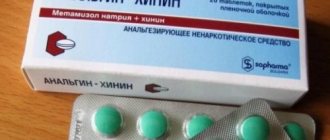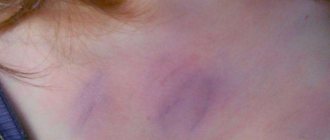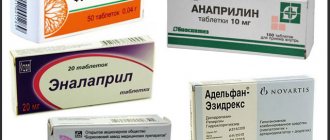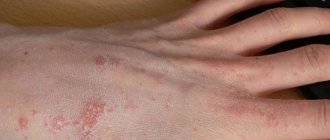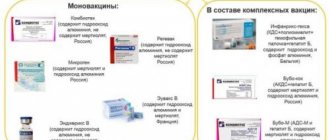The pharmacological group of glucocorticosteroids includes Dexamethasone injections. The hormonal drug is in demand in various fields of medicine. It is administered intravenously or intramuscularly if medically available. The transparent liquid contains no impurities. The doctor may prescribe the patient treatment with Dexamethasone in ampoules of 1 or 2 ml.
Mechanism of action of the local drug
How does the drug "Dexamethasone" (ointment) work? The instructions for use indicate that after placing this product behind the lower eyelid, its active substance quite quickly penetrates the superficial layers of the visual organs.
This medication acts locally and also exhibits anti-inflammatory, decongestant and antiallergic properties. Under the influence of Dexamethasone, the permeability of small blood vessels decreases and narrows. Also, the drug in question eliminates redness of the sclera, swelling and other signs of an inflammatory process or an allergic reaction. This effect of the drug is due to the fact that Dexamethasone is able to suppress the formation, activity and transportation of biological substances that are directly involved in the described processes.
Interaction with other drugs
When used together, Dexamethasone and non-steroidal anti-inflammatory drugs increase the risk of ulcerative lesions of the gastrointestinal tract.
Hormonal contraceptives containing estrogens slow down the elimination of Dexamethasone, thereby enhancing its effect.
The simultaneous use of Dexamethasone with drugs containing a large amount of sodium ions increases the risk of edema and increased blood pressure.
It is strongly recommended not to drink alcohol during treatment with Dexamethasone, regardless of the dosage form of the latter. Dexamethasone and ethyl alcohol mutually enhance each other's toxic effects, which can negatively affect the function of the central nervous system, liver, and digestive tract.
Negative aspects of the drug
How is Dexamethasone different from other eye products? Ointment for external use can significantly reduce local immunity. This often leads to the addition of a fungal or bacterial infection, which significantly aggravates the patient’s condition.
It should be especially noted that the development of such diseases cannot be recognized immediately, since Dexamethasone well suppresses and hides any inflammatory processes.
Due to the possible occurrence of general adverse reactions, this ointment is not recommended for the treatment of adolescents and small children, since its active substance can negatively affect their sexual development and normal growth.
Directions for use and doses
When using Dexamethasone preparations for systemic use, the bulk of the daily dose should be administered in the morning, which is due to the physiological rhythm of the secretion of the adrenal cortex's own hormones. Dexamethasone medications should be discontinued gradually, as otherwise there is a risk of a sharp deterioration in the patient's condition.
Pills.
If the dose is small (4-6 mg/day), it is better to take it once in the morning. If the dose is 6-20 mg/day, 50% of this dose should be taken early in the morning and the remainder divided into two doses.
Injections.
Intravenous jet (slow) and drip, as well as intramuscular administration of Dexamethasone are allowed. After achieving the required therapeutic effect, the dose of the drug is gradually reduced and switched to tablet forms.
What is the drug "Dexamethasone" prescribed for?
Ophthalmic ointment with an active substance such as dexamethasone is often used for the development of non-purulent allergic and inflammatory processes, in particular:
- with inflammation of the upper layers of the visual organs, as well as the cornea, eyelid margins, sclera and conjunctiva (for diseases such as blepharitis, scleritis, conjunctivitis, keratitis);
- inflammation of the ciliary body, iris and choroid (in diseases such as iridocyclitis and uevitis).
Also, the drug "Dexamethasone" (ointment) can be prescribed to prevent inflammatory processes after ophthalmological operations and eye burns (only after all defects in the upper layers of the visual organs are completely healed).
Dexamethasone / Dexamethasone
Fluorinated corticosteroids have a pronounced anti-inflammatory, anti-allergic and anti-exudative effect. By interacting with a specific protein receptor in target tissues, it regulates the expression of corticoid-dependent genes and thus affects protein synthesis. Reduces the formation, release and activity of inflammatory mediators (histamine, bradykinin, prostaglandins, lysosomal enzymes). Suppresses cell migration to the site of inflammation; reduces vasodilation and increased vascular permeability at the site of inflammation. Stabilizes lysosomal enzymes of leukocyte membranes; suppresses antibody synthesis and disrupts antigen recognition. Inhibits the release of interleukin-1 and interleukin-2, interferon gamma from lymphocytes and macrophages. Induces the formation of lipocortin, inhibits the release of inflammatory mediators by eosinophils and stabilizes mast cell membranes. All of these effects are involved in suppressing the inflammatory response in tissues in response to mechanical, chemical or immune damage. The duration of the anti-inflammatory effect after instillation of 1 drop of solution is from 4 to 8 hours.
Company manufacturer:
KRKA (Slovenia), ELLARA (Russia), WARSAW PHARMACEUTICAL WORK POLFA representative office: WARSAW PHARMACEUTICAL PLANT POLFA JSC (Poland), BELMEDPREPARATY (Republic of Belarus), SC ROMPHARM Company representative office: ROMFARM COMPANY S.R.L. (Romania), PILOT PLANT GNTsLS DP UKRMEDPROM (Ukraine), UPDATE (Russia), Chemical and Pharmaceutical Plant AKRIKHIN (Russia), ELFA SPC (Russia) produced by: ELFA LABORATORIES (India), SHREYA LIFE SCIENCES (India), BIOCHIMIC (Russia) ), KRKA (Slovenia) packaging: VECTOR-MEDIKA (Russia), SPINCOMED (India), DALHIMFARM (Russia), MJ BIOPHARM (India), State Institution Russian Cardiology Research and Production Complex of the Ministry of Health of the Russian Federation - branch Experimental production of biomedical drugs (Russia ) - EP MBP, NOVOSIBKHIMPHARM - R-PHARM (Russia)
Active substance:
Dexamethasone, Rec.INN registered by WHO
Analogues:
Vero-Dexamethasone, Decadron, Dexaven, Dexasone, Dexamed, Dexamethasone bufus, Dexamethasone Nycomed, Dexamethasone-Betalek, Dexamethasone-Vial, Dexamethasone-LENS, Dexamethasone-MEZ, Dexamethasone-Ferein, Dexamethasone sodium phosphate, Dexamethasone tablets 0.0005 g, Dexamethasone phosphate, Dexamethasone phosphate disodium salt, Dexamethasonelong, Dexapos, Dexafar, Dexona, Dexoftan, Maxidex, Megadexan, Ozurdex, Oftan Dexamethasone, Fortecortin, Fortecortin Mono
Composition and release form, packaging:
Solution for injection: Solution for injection in 1 ml - 4 mg
| 1 ampoule, 1 ml | 1 ampoule, 2 ml | |
| dexamethasone sodium phosphate | 4 mg | 8 mg |
| Shreya Life Sciences (India) | dark glass ampoule, cardboard pack 5, 10, 15, 20, 25 | dark glass ampoule, cardboard pack 5, 10, 15, 20, 25 |
| KRKA (Slovenia) | dark glass ampoule, strip packaging 5, cardboard pack 5, 50 | |
| MJBiopharm (India) | dark glass ampoule, cardboard pack 5, 10, 15, 20, 25, 50, 100, 200, 500, 1000, 4000 dark glass bottle (bottle), cardboard box (box) 5, 10, 15, 20, 25, 50 , 100, 200, 500, 1000, 4000 | dark glass ampoule, cardboard pack 5, 10, 15, 20, 25, 50, 100, 200, 500, 1000, 4000 dark glass bottle (bottle), cardboard box (box) 5, 10, 15, 20, 25, 50 , 100, 200, 500, 1000, 4000 |
| Russian Cardiological Research and Production Complex FGU Rosmedtekhnologii - Experimental production of medical and biological drugs (Russia) | contour packaging 5.10, cardboard pack 1, 2; contour plastic packaging (pallets) 5, 10, cardboard pack 1.2; | contour packaging 5,10 cardboard pack 1, 2; contour plastic packaging (pallets) 5, 10, cardboard pack 1.2; |
| Biochemist (Russia) | dark glass ampoule with ampoule knife, contour plastic packaging (pallets) 5, cardboard pack 1, 2; dark glass ampoule with ampoule knife, cardboard pack 5, 10; dark glass ampoule with ampoule knife, cardboard box 10 | dark glass ampoule with ampoule knife, contour plastic packaging (pallets) 5, cardboard pack 1, 2; dark glass ampoule with ampoule knife, cardboard pack 5, 10; dark glass ampoule with ampoule knife, cardboard box 10 |
| KRKA (Slovenia); packer: Vector-Medica (Russia) | dark glass ampoule, strip packaging 5, cardboard pack 5 | |
| KRKA (Slovenia); packer: KRKA-Rus (Russia) | dark glass ampoule, strip packaging 5, cardboard pack 5 | |
| Belmedpreparaty RUP (Republic of Belarus) | ampoule with scarifier, cardboard box (box) 10 ampoule with scarifier, outline packaging 5, cardboard pack 1, 2 | ampoule with scarifier, cardboard box (box) 10 ampoule with scarifier, outline packaging 5, cardboard pack 1, 2 |
| SP Incomed Pvt. (India) | dark glass ampoule, strip packaging 5, cardboard pack 1, 2, 3, 4, 5, 8, 20, 40, 60 dark glass bottle (bottle), strip packaging 5, cardboard pack 1, 2, 3, 4, 5, 8, 20, 40, 60 | dark glass ampoule, strip packaging 5, cardboard pack 1, 2, 3, 4, 5, 8, 20, 40, 60 dark glass bottle (bottle), strip packaging 5, cardboard pack 1, 2, 3, 4, 5, 8, 20, 40, 60 |
| Dalkhimpharm (Russia) | dark glass ampoule with ampoule knife, cardboard box (box) 10; dark glass ampoule with ampoule knife, outline packaging 5, cardboard pack 1, 2 | |
| Elfa Research and Production Center CJSC (Russia); manufacturer: Elfa Laboratories (India) | dark glass ampoule, mesh grid 25, cardboard pack 1; | |
| Ellara LLC (Russia) | ampoule with break point 1 ml, cardboard pack 5,10 ampoule with ampoule knife, cardboard pack 5, 10 ampoule for hospitals, cardboard box 250, 500 ampoules with label, contour pack 5, cardboard pack 1, 2 dark ampoule glass with an ampoule knife, cardboard pack 5, 10 dark glass ampoule with an ampoule knife, contour strip packaging 5, cardboard pack 1, 2, 3, 4, 5 dark glass ampoule with a label with an ampoule knife, contour strip packaging 5, box (box ) cardboard 50, 100 | ampoule with break point 1 ml, cardboard pack 5,10 ampoule with ampoule knife, cardboard pack 5, 10 ampoule for hospitals, cardboard box 250, 500 ampoules with label, contour pack 5, cardboard pack 1, 2 dark ampoule glass with an ampoule knife, cardboard pack 5, 10 dark glass ampoule with an ampoule knife, contour strip packaging 5, cardboard pack 1, 2, 3, 4, 5 dark glass ampoule with a label with an ampoule knife, contour strip packaging 5, box (box ) cardboard 50, 100 |
| Excipients: methyl parahydroxybenzoate, propyl parahydroxybenzoate, sodium metabisulfite, disodium EDTA salt, sodium hydroxide, water for injection. | ||
Solution for intravenous and intramuscular administration:
| Solution for injection in 1 ml - 4 mg | 1 ampoule, 1 ml |
| Dexamethasone sodium phosphate | 4 mg |
| Novosibkhimpharm (Russia) | ampoule with ampoule knife, cardboard pack 10 ampoule with ampoule knife, contour plastic packaging (pallets) 5, 10 cardboard pack 1, 2 |
| Excipients: methyl parahydroxybenzoate, propyl parahydroxybenzoate, sodium metabisulfite, disodium EDTA salt, sodium hydroxide, water for injection. | |
Eye drops:
| Eye drops 0.1% | Dropper bottle | Dropper tube | |||||
| 5 ml | 10 ml | 1 ml | 1.5 ml | 2 ml | 5 ml | 10 ml | |
| Dexamethasone sodium phosphate | 5 mg | 10 mg | 1 mg | 1.5 mg | 2 mg | 5 mg | 10 mg |
| Farmak PJSC (Ukraine) | cardboard pack 1 | cardboard pack 1 | |||||
| CO Rompharm Company SRL (Romania) | cardboard pack 1 | ||||||
| Belmedpreparaty RUP (Republic of Belarus) | cardboard pack 1 | cardboard pack 2 | |||||
| PFC update (Russia) | cardboard pack 1, 5, 10 | cardboard pack 1, 5, 10 | cardboard pack 1, 5, 10 | cardboard pack 1 | cardboard pack 1 | ||
| excipients: methylparaben; propylparaben; sodium metabisulfite; disodium edetate; sodium hydroxide; water for injections | |||||||
Ophthalmic suspension:
| Ophthalmic suspension 0.1% | Dropper bottle | |
| 5 ml | 10 ml | |
| Dexamethasone sodium phosphate | 5 mg | 10 mg |
| WARSAW PHARMACEUTICAL WORKS POLFA (Poland) | box (box) 1 | box (box) 1 |
| excipients: sodium hydrogen phosphate twelvehydrate; sodium dihydrogen phosphate; sodium chloride; disodium ethylenediaminetetraacetic acid dihydrate; benzalkonium chloride; polysorbate; ethanol; water for making eye drops | ||
Pills:
| Pills | 1 tablet |
| Dexamethasone | 500 mcg |
| Orion Corporation (Finland) | glass bottle (bottle) 50, 100, box (box) 1 |
| Sanavita Gesundheitsmittel (Germany) | pack 20 |
| Akrikhin (Russia) | dark glass jar (jar) 50, 100 cardboard pack 1 contour cell package 10, cardboard pack 1, 2, 5, 10 contour cell package 20, cardboard pack 1, 2, 3, 5 polypropylene jar (jar) 50, 100, pack cardboard 1 jar (jar) polyethylene 50, 100, cardboard pack 1 |
| KRKA (Slovenia) | bottle (bottle) of dark glass 10, cardboard pack 1 blister 10, cardboard pack 1 |
| GNTsLS Pilot Plant LLC (Ukraine) | polypropylene pencil case 50, cardboard pack 1 polypropylene pencil case 50, cardboard box (box) 50 outline packaging 10, cardboard pack 1, 5 |
| PFC update (Russia) | contour packaging 10, cardboard pack 5, 10 contour packaging 14, cardboard pack 4 |
Pharmacological group:
Glucocorticosteroid
Pharmachologic effect:
immunosuppressive, antiallergic, anti-inflammatory, antiexudative
Pharmacokinetics:
- Dexamethasone is rapidly and almost completely absorbed after oral administration. The bioavailability of dexamethasone tablets is approximately 80%. Cmax in blood plasma and the maximum effect after oral administration are achieved within 1-2 hours; After taking a single dose, the effect lasts for approximately 2.75 days.
- When applied topically, dexamethasone penetrates through the cornea with intact epithelium into the aqueous humor of the anterior chamber of the eye.
- In blood plasma, approximately 77% of dexamethasone is bound to proteins, mainly albumin. A small amount of dexamethasone binds to non-albumin proteins. Dexamethasone is a fat-soluble substance that can penetrate into extra- and intracellular spaces. In the central nervous system (hypothalamus, pituitary gland), its effects are due to binding to membrane receptors. In peripheral tissues it binds to cytoplasmic receptors. Its disintegration occurs at the place of its action, i.e. in a cage. Metabolized primarily in the liver (mainly by conjugation with glucuronic and sulfuric acids) to the formation of inactive metabolites. Excreted by the kidneys (a small part by the lactating glands). T1/2 of dexamethasone from plasma - 3-5 hours.
- Dexamethasone increases the content of 11- and 17-hydroxyketocorticosteroid metabolites
Indications:
- For intravenous and intramuscular administration:
Diseases requiring the administration of fast-acting corticosteroids, as well as cases when oral administration of the drug is impossible: - endocrine diseases: acute adrenal insufficiency, primary or secondary adrenal insufficiency, congenital adrenal hyperplasia, subacute thyroiditis;
- shock (burn, traumatic, surgical, toxic) - if vasoconstrictors, plasma replacement drugs and other symptomatic therapy are ineffective;
- cerebral edema (with a brain tumor, traumatic brain injury, neurosurgical intervention, cerebral hemorrhage, encephalitis, meningitis, radiation injury);
- status asthmaticus; severe bronchospasm (exacerbation of bronchial asthma, chronic obstructive bronchitis);
- severe allergic reactions, anaphylactic shock;
- rheumatic diseases;
- systemic connective tissue diseases;
- acute severe dermatoses;
- malignant diseases: palliative treatment of leukemia and lymphoma in adult patients; acute leukemia in children; hypercalcemia in patients suffering from malignant tumors when oral treatment is not possible;
- blood diseases: acute hemolytic anemia, agranulocytosis, idiopathic thrombocytopenic purpura in adults;
- severe infectious diseases (in combination with antibiotics);
- In ophthalmological practice (subcontonctival, retrobulbar or parabulbaric administration): allergic conjunctivitis, keratitis, keratoconjunitivitis without damage to the epithelium, irritation, iridocyclite, blepharitis, bluffaroconcotivitis, scleritis, inflammatory process after eye injuries and surgical interventions, sympathetic ophtal miya, immunosuppressive treatment after transplantation corneas;
- local application (in the area of pathological formation): keloids, discoid lupus erythematosus, granuloma annulare.
- Eye drops and eye suspension:
acute and chronic allergic and inflammatory eye diseases (including conjunctivitis, scleritis, deep keratitis without damage to the epithelium, iritis, iridocyclitis, choroiditis, chorioretinitis, optic neuritis); - prevention and treatment of inflammatory processes in the postoperative and post-traumatic period.
- For tablets:
From the endocrine system: replacement therapy for primary and secondary (pituitary) adrenal insufficiency, congenital adrenal hyperplasia, subacute thyroiditis and severe forms of post-radiation thyroiditis. Rheumatic diseases: rheumatoid arthritis (including juvenile chronic arthritis) and extra-articular lesions in rheumatoid arthritis (lungs, heart, eyes, cutaneous vasculitis). - Systemic connective tissue diseases, vasculitis and amyloidosis (as part of combination therapy): systemic lupus erythematosus (treatment of polyserositis and lesions of internal organs), Sjogren's syndrome (treatment of lesions of the lungs, kidneys and brain), systemic sclerosis (treatment of myositis, pericarditis and alveolitis) , polymyositis, dermatomyositis, systemic vasculitis, amyloidosis (replacement therapy for adrenal insufficiency), scleroderma.
- Skin diseases: pemphigoid, bullous dermatitis, dermatitis herpetiformis, exfoliative dermatitis, exudative erythema (severe forms), erythema nodosum, seborrheic dermatitis (severe forms), psoriasis (severe forms), lichen, fungoid mycoses, Quincke's edema, bronchial asthma, contact dermatitis , atopic dermatitis, serum sickness, allergic rhinitis, drug disease (hypersensitivity to drugs), urticaria after blood transfusion, systemic immune diseases (sarcoidosis, temporal arteritis).
- Eye diseases: proliferative changes in the orbit (endocrine ophthalmopathy, pseudotumors), sympathetic ophthalmia, immunosuppressive therapy for corneal transplantation.
- Gastrointestinal diseases: ulcerative colitis (severe exacerbations), Crohn's disease (severe exacerbations), chronic autoimmune hepatitis, rejection reaction after liver transplantation.
- Blood diseases: congenital or acquired acute pure aplastic anemia, autoimmune hemolytic anemia, secondary thrombocytopenia in adults, erythroblastopenia, acute lymphoblastic leukemia (induction therapy), myelodysplastic syndrome, angioimmunoblastic malignant T-cell lymphoma (in combination with cytostatics), plastocytoma (in combination with cytostatics), anemia after myelofibrosis with myeloid metaplasia or lymphoplasmacytoid immunocytoma, systemic histiocytosis (systemic process).
- Kidney diseases: primary and secondary glomerulonephritis (Goodpasture syndrome), kidney damage in systemic connective tissue diseases (systemic lupus erythematosus, Sjogren's syndrome), systemic vasculitis (usually in combination with cyclophosphamide), glomerulonephritis in polyarteritis nodosa, Churg-Strauss syndrome, Wegener's granulomatosis Henoch-Schönlein purpura, mixed cryoglobulinemia, kidney damage in Takayasu arteritis, interstitial nephritis, immunosuppressive therapy after kidney transplantation, inducing diuresis or reducing proteinemia in idiopathic nephrotic syndrome (without uremia) and in kidney damage due to systemic lupus erythematosus.
- Malignant diseases: palliative therapy of leukemia and lymphoma in adults, acute leukemia in children, hypercalcemia in malignant neoplasms.
- Other indications: tuberculous meningitis with subarachnoid blockade (in combination with adequate anti-tuberculosis therapy ), trichinosis with neurological or myocardial manifestations.
ICD10 codes:
| A48.3 | Toxic shock syndrome |
| A49 | Bacterial infection of unspecified localization |
| C71 | Malignant neoplasm of the brain |
| C80 | Malignant neoplasm without specification of localization |
| C82 | Follicular [nodular] non-Hodgkin's lymphoma |
| C83 | Diffuse non-Hodgkin's lymphoma |
| C84 | Peripheral and cutaneous T-cell lymphomas |
| C85 | Other and unspecified types of non-Hodgkin's lymphoma |
| C91.0 | Acute lymphoblastic leukemia |
| C94.0 | Acute erythremia and erythroleukemia |
| C95 | Leukemia of unspecified cell type |
| C95.0 | Acute leukemia of unspecified cell type |
| C95.9 | Leukemia, unspecified |
| D59 | Acquired hemolytic anemia |
| D59.1 | Other autoimmune hemolytic anemias |
| D69.3 | Idiopathic thrombocytopenic purpura |
| D69.6 | Thrombocytopenia, unspecified |
| D70 | Agranulocytosis |
| E03 | Other forms of hypothyroidism |
| E05 | Thyrotoxicosis [hyperthyroidism] |
| E06 | Thyroiditis |
| E06.1 | Subacute thyroiditis |
| E25 | Adrenogenital disorders |
| E27.1 | Primary adrenal insufficiency |
| E27.2 | Addison's crisis |
| E27.4 | Other and unspecified adrenal insufficiency |
| E83.5.0* | Hypercalcemia |
| G00 | Bacterial meningitis, not elsewhere classified |
| G04 | Encephalitis, myelitis and encephalomyelitis |
| G93.6 | Brain swelling |
| H01.0 | Blepharitis |
| H10 | Conjunctivitis |
| H10.1 | Acute atopic conjunctivitis |
| H10.2 | Other acute conjunctivitis |
| H10.4 | Chronic conjunctivitis |
| H10.5 | Blepharoconjunctivitis |
| H10.9 | Conjunctivitis, unspecified |
| H15.0 | Scleritis |
| H15.1 | Episcleritis |
| H15.9 | Disease of the sclera, unspecified |
| H16 | Keratitis |
| H16.2 | Keratoconjunctivitis |
| H16.8 | Other forms of keratitis |
| H20 | Iridocyclitis |
| H20.0 | Acute and subacute iridocyclitis (anterior uveitis) |
| H20.1 | Chronic iridocyclitis |
| H20.9 | Iridocyclitis, unspecified |
| H30 | Chorioretinal inflammation |
| H32 | Chorioretinal disorders in diseases classified elsewhere |
| H44.1 | Other endophthalmitis (sympathetic uveitis) |
| H45.1 | Endophthalmitis in diseases classified elsewhere |
| H46 | Optic neuritis |
| I61 | Intracerebral hemorrhage |
| J40 | Bronchitis, not specified as acute or chronic |
| J44 | Other chronic obstructive pulmonary disease |
| J45 | Asthma |
| J46 | Asthmatic status |
| J98.8.0* | Bronchospasm |
| K51 | Ulcerative colitis |
| L10 | Pemphigus [pemphigus] |
| L20.8 | Other atopic dermatitis (neurodermatitis, eczema) |
| L30.9 | Dermatitis, unspecified |
| L91.0 | Keloid scar |
| L92.0 | Granuloma annulare |
| L93.0 | Discoid lupus erythematosus |
| M05 | Seropositive rheumatoid arthritis |
| M15 | Polyarthrosis |
| M30 | Polyarteritis nodosa and related conditions |
| M30-M36 | Systemic connective tissue lesions |
| M42 | Osteocondritis of the spine |
| M45 | Ankylosing spondylitis |
| M65 | Synovitis and tenosynovitis |
| M71 | Other bursopathies |
| M75.0 | Adhesive capsulitis of the shoulder |
| M79.0 | Rheumatism, unspecified |
| N04 | Nephrotic syndrome |
| Q89.1 | Adrenal malformations |
| R50 | Fever of unknown origin |
| R57.1 | Hypovolemic shock |
| R57.8 | Other types of shock |
| R57.8.0 | Burn shock |
| R57.9 | Shock, unspecified |
| S05 | Trauma to the eye and orbit |
| S05.9 | Injury to unspecified part of eye and orbit |
| S06 | Intracranial trauma |
| S09 | Other and unspecified head injuries |
| T26 | Thermal and chemical burns limited to the area of the eye and its adnexa |
| T78.2 | Anaphylactic shock, unspecified |
| T78.3 | Angioedema (Quincke's edema) |
| T78.4 | Allergy unspecified |
| T79.4 | Traumatic shock |
| T80.6 | Other serum reactions |
| T88.7 | Pathological reaction to a drug or drugs, unspecified |
| T90.4 | Consequences of injury to the eye and periorbital region |
| Z29.8 | Other specified preventive measures |
| Z51.0 | Radiotherapy course |
| Z51.5 | Palliative care |
| Z94.7 | Presence of a transplanted cornea |
| Z100* | CLASS XXII Surgical Practice |
Directions for use and dosage:
- Individual.
Orally for severe diseases at the beginning of treatment, up to 10-15 mg/day is prescribed; the maintenance dose can be 2-4.5 mg or more per day. For adrenogenital syndrome - 1-1.5 mg/day. The daily dose is divided into 2-3 doses. Take small doses 1 time/day in the morning. - For parenteral use,
administered intravenously in a slow stream or drip (in acute and emergency conditions); i/m; Periarticular and intra-articular administration is also possible. During the day, you can administer from 4 to 20 mg of dexamethasone 3-4 times. The duration of parenteral use is usually 3-4 days, then switch to maintenance therapy with an oral form. In the acute period for various diseases and at the beginning of treatment, dexamethasone is used in higher doses. When the effect is achieved, the dose is reduced at intervals of several days until the maintenance dose is reached or until treatment is stopped. - To prepare a solution for intravenous drip infusion, you should use an isotonic sodium chloride solution or a 5% dextrose solution.
- In the acute period for various diseases and at the beginning of therapy, Dexamethasone is used in higher doses. During the day, you can administer from 4 to 20 mg of Dexamethasone 3-4 times.
- Doses of the drug for children (i.m.)
- When carrying out replacement therapy (for adrenal insufficiency)
- 0.0233 mg/kg or 0.67 mg/m2, divided into 3 doses, every 3rd day or 0.00776–0.01165 mg/kg or 0.233–0.335 mg/m2 daily. For other indications, the recommended dose is 0.02776 to 0.16665 mg/kg or 0.833 to 5 mg/m2 every 12 to 24 hours. - When the effect is achieved, the dose is reduced to maintenance or until treatment is stopped. The duration of parenteral use is usually 3-4 days, then switch to maintenance therapy with Dexamethasone tablets.
- Long-term use of high doses of the drug requires a gradual dose reduction in order to prevent the development of acute adrenal insufficiency.
- conjunctivally
in ophthalmology , adults and children over 12 years of age in acute inflammatory conditions: 1-2 drops 4-5 times a day for 2 days, then 3-4 times a day for 4-6 days. - Chronic conditions
: 1-2 drops 2 times a day for a maximum of 4 weeks (no more). - In post-operative and post-traumatic cases
: starting from the 8th day after surgery for strabismus, retinal detachment, cataract extraction and from the moment of injury - 1-2 drops 2-4 times a day for 2-4 weeks; for antiglaucoma filtering surgery - on the day of surgery or the day after it. - Children from 6 to 12 years old with allergic inflammatory conditions
: 1 drop 2-3 times a day for 7-10 days, if necessary, treatment is continued after monitoring the condition of the cornea on the 10th day.
Overdose:
Single use of a large number of tablets does not lead to clinically significant intoxication.
- Symptoms:
increased dose-dependent side effects are possible. In this case, the dose of the drug should be reduced. - Treatment:
supportive and symptomatic. There is no specific antidote. Hemodialysis is ineffective.
Side effects:
- The most common symptoms:
Increased appetite, moon-shaped face, hirsutism, acne, osteoporosis, increased intraocular pressure, suppression of the secretion of hormones from the pituitary gland and adrenal cortex.
- By organs and systems: From the endocrine system:
decreased glucose tolerance, steroid diabetes mellitus or manifestation of latent diabetes mellitus, suppression of adrenal function, Itsenko-Cushing syndrome (including moon face, pituitary-type obesity, hirsutism, increased blood pressure, dysmenorrhea, amenorrhea, myasthenia, striae), delayed sexual development in children. - Metabolism:
increased excretion of calcium ions, hypocalcemia, increased body weight, negative nitrogen balance (increased protein breakdown), increased sweating, hypernatremia, hypokalemia. - From the central nervous system:
delirium, disorientation, euphoria, hallucinations, manic-depressive psychosis, depression, paranoia, increased intracranial pressure, nervousness or anxiety, insomnia, dizziness, vertigo, pseudotumor of the cerebellum, headache, convulsions. - From the cardiovascular system:
arrhythmias, bradycardia (up to cardiac arrest); development (in predisposed patients) or increased severity of chronic heart failure, ECG changes characteristic of hypokalemia, increased blood pressure, hypercoagulation, thrombosis. In patients with acute and subacute myocardial infarction - the spread of necrosis, slowing down the formation of scar tissue, which can lead to rupture of the heart muscle; with intracranial administration - nosebleeds. - From the digestive system:
nausea, vomiting, pancreatitis, steroid ulcer of the stomach and duodenum, erosive esophagitis, bleeding and perforation of the gastrointestinal tract, increased or decreased appetite, flatulence, hiccups; rarely - increased activity of liver transaminases and alkaline phosphatase. - From the senses:
posterior subcapsular cataract, increased intraocular pressure with possible damage to the optic nerve, a tendency to develop secondary bacterial, fungal or viral eye infections, trophic changes in the cornea, exophthalmos. - From the musculoskeletal system:
slower growth and ossification processes in children (premature closure of the epiphyseal growth plates), osteoporosis (very rarely - pathological bone fractures, aseptic necrosis of the head of the humerus and femur), rupture of muscle tendons, steroid myopathy, decreased muscle mass (atrophy). - Dermatological reactions:
delayed wound healing, petechiae, ecchymosis, skin thinning, hyper- or hypopigmentation, steroid acne, stretch marks, tendency to develop pyoderma and candidiasis. - Allergic reactions:
generalized (including skin rash, skin itching, anaphylactic shock) and when applied topically. - Effects associated with immunosuppressive effects:
development or exacerbation of infections (the appearance of this side effect is facilitated by jointly used immunosuppressants and vaccination). - Local reactions:
with parenteral administration - tissue necrosis. - In ophthalmology:
Burning sensation, conjunctival hyperemia, lacrimation, increased intraocular pressure. With continuous use for more than 3 months, posterior capsular cataracts may develop.
Contraindications:
- For short-term use for health reasons
- hypersensitivity to dexamethasone.
- For intra-articular injection and injection directly into the lesion
: previous arthroplasty, pathological bleeding (endogenous or caused by the use of anticoagulants), intra-articular bone fracture, infectious (septic) inflammatory process in the joint and periarticular infections (including a history), as well as general infectious disease, severe periarticular osteoporosis, absence of signs of inflammation in the joint (“dry” joint, for example, in osteoarthritis without synovitis), severe bone destruction and joint deformation (sharp narrowing of the joint space, ankylosis), joint instability as a result of arthritis, aseptic necrosis of the forming epiphyseal joint of bones.
- For external use:
bacterial, viral, fungal skin diseases, skin tuberculosis, skin manifestations of syphilis, skin tumors, post-vaccination period, violation of the integrity of the skin (ulcers, wounds), children's age (up to 2 years, with itching in the anus - up to 12 years), rosacea, acne vulgaris, perioral dermatitis.
- In ophthalmology:
keratitis caused by Herpes simplex or Varicella zoster viruses (dendritic keratitis), viral diseases of the cornea and conjunctiva (including chickenpox); - mycobacterial eye infections;
- fungal eye diseases;
- acute purulent eye diseases;
- corneal epitheliopathy;
- increased intraocular pressure;
- hypersensitivity to the components of the drug.
- trachoma
- glaucoma.
Interaction:
- When used simultaneously with antipsychotics, bucarban, azathioprine, there is a risk of developing cataracts; with drugs that have an anticholinergic effect - the risk of developing glaucoma.
- When used simultaneously with dexamethasone, the effectiveness of insulin and oral hypoglycemic drugs is reduced.
- When used simultaneously with hormonal contraceptives, androgens, estrogens, and anabolic steroids, hirsutism and acne are possible.
- When used simultaneously with diuretics, increased excretion of potassium is possible; with NSAIDs (including acetylsalicylic acid) - the incidence of erosive and ulcerative lesions and bleeding from the gastrointestinal tract increases.
- When used simultaneously with oral anticoagulants, the anticoagulant effect may be weakened.
- When used simultaneously with cardiac glycosides, the tolerability of cardiac glycosides may deteriorate due to potassium deficiency.
- When used simultaneously with aminoglutethimide, the effects of dexamethasone may be reduced or inhibited; with carbamazepine - the effect of dexamethasone may be reduced; with ephedrine - increased excretion of dexamethasone from the body; with imatinib - a decrease in the concentration of imatinib in the blood plasma is possible due to the induction of its metabolism and increased excretion from the body.
- When used simultaneously with itraconazole, the effects of dexamethasone are enhanced; with methotrexate - increased hepatotoxicity is possible; with praziquantel - a decrease in the concentration of praziquantel in the blood is possible.
- When used simultaneously with rifampicin, phenytoin, and barbiturates, the effects of dexamethasone may be weakened due to increased excretion from the body.
Special instructions:
- Caution should be used in case of parasitic and infectious diseases of a viral, fungal or bacterial nature (currently or recently suffered, including recent contact with a patient) - herpes simplex, herpes zoster (viremic phase), chicken pox, measles, amoebiasis, strongyloidiasis (established or suspected), systemic mycosis; active and latent tuberculosis. Use for severe infectious diseases is permissible only against the background of specific therapy.
- It should be used with caution within 8 weeks before and 2 weeks after vaccination, with lymphadenitis after BCG vaccination, with immunodeficiency conditions (including AIDS or HIV infection).
- Use with caution in diseases of the gastrointestinal tract: gastric and duodenal ulcers, esophagitis, gastritis, acute or latent peptic ulcers, recently created intestinal anastomosis, nonspecific ulcerative colitis with the threat of perforation or abscess formation, diverticulitis.
- Should be used with caution for diseases of the cardiovascular system, incl. after a recent myocardial infarction (in patients with acute and subacute myocardial infarction, the necrotic focus may spread, slowing down the formation of scar tissue and, as a result, rupture of the heart muscle), with decompensated chronic heart failure, arterial hypertension, hyperlipidemia), with endocrine diseases - diabetes mellitus ( including impaired tolerance to carbohydrates), thyrotoxicosis, hypothyroidism, Itsenko-Cushing's disease, with severe chronic renal and/or liver failure, nephrourolithiasis, with hypoalbuminemia and conditions predisposing to its occurrence, with systemic osteoporosis, myasthenia gravis, acute psychosis , obesity (III-IV degree), with poliomyelitis (with the exception of the form of bulbar encephalitis), open- and closed-angle glaucoma.
- If intra-articular administration is necessary, it should be used with caution in patients with a general severe condition, ineffectiveness (or short duration) of the action of 2 previous administrations (taking into account the individual properties of the GCS used).
- Before and during GCS therapy, it is necessary to monitor a general blood count, glycemic levels and plasma electrolyte levels.
- For intercurrent infections, septic conditions and tuberculosis, simultaneous antibiotic therapy is necessary.
- Relative adrenal insufficiency caused by dexamethasone may persist for several months after its discontinuation. Taking this into account, in stressful situations that arise during this period, hormonal therapy is resumed with the simultaneous administration of salts and/or mineralocorticoids.
- When using dexamethasone in patients with corneal herpes, the possibility of corneal perforation should be kept in mind. During treatment, it is necessary to monitor intraocular pressure and the condition of the cornea.
- With the sudden withdrawal of dexamethasone, especially in the case of previous use in high doses, a so-called withdrawal syndrome occurs (not caused by hypocortisolism), manifested by anorexia, nausea, lethargy, generalized musculoskeletal pain, and general weakness. After discontinuation of dexamethasone, relative adrenal insufficiency may persist for several months. If stressful situations arise during this period, GCS is prescribed (according to indications), if necessary in combination with mineralocorticoids.
- During the treatment period, monitoring of blood pressure, water and electrolyte balance, peripheral blood picture and glycemic level, as well as observation by an ophthalmologist is required.
- In children, during long-term treatment, careful monitoring of the dynamics of growth and development is necessary. Children who during the treatment period were in contact with patients with measles or chickenpox are prescribed specific immunoglobulins prophylactically.
Pregnancy and breastfeeding:
During pregnancy (especially in the first trimester), as well as during lactation, dexamethasone is used taking into account the expected therapeutic effect and negative effect on the fetus. With long-term therapy during pregnancy, the possibility of fetal growth disturbances cannot be excluded. If used at the end of pregnancy, there is a risk of atrophy of the adrenal cortex in the fetus, which may require replacement therapy in the newborn. During lactation, therapy is acceptable for no more than 7-10 days.
For renal dysfunction:
Use with caution in severe chronic renal failure.
For liver dysfunction:
Use with caution in severe chronic liver failure.
Use in childhood:
see dosages
Storage conditions:
In a place protected from light, at a temperature of 15–25 °C (do not freeze).
Keep out of the reach of children.
Shelf life:
2 years. Do not use after the expiration date stated on the package.
Conditions for dispensing from pharmacies:
The drug is available with a prescription.
Contraindications to the use of eye ointment
In what cases do doctors prohibit the use of the drug Dexamethasone (ointment)? The following conditions are contraindications for this eye product:
- any damage to the upper layers of the cornea;
- hypersensitivity of the patient's body to the components of the local medicine;
- diseases of the visual organs that are fungal, viral, purulent, tuberculous or bacterial in nature;
- adolescence and childhood (due to the fact that clinical studies of the drug have not been conducted on this category of patients);
- breastfeeding period.
It should also be noted that during pregnancy, the drug "Dexamethasone" (ointment) can only be used as prescribed by a doctor. This is due to the fact that some of the medication can penetrate the systemic bloodstream and, as a result, negatively affect the fetus.
special instructions
Pregnancy and lactation
No human studies have been conducted to confirm or refute the harm of Dexamethasone to the fetus; however, tests were carried out on laboratory animals, which confirmed the negative effect of the drug on the body of a newborn baby.
Thus, Dexamethasone should be used during pregnancy only when the benefits of its use significantly outweigh the potential harm to the fetus. This situation occurs when there is a threat of miscarriage caused by an increase in the woman’s adrenal glands of male sex hormones. Taking Dexamethasone in this case normalizes testosterone levels, making the risk of miscarriage minimal.
During breastfeeding, it should be remembered that Dexamethasone passes into breast milk. Therefore, you should either stop using Dexamethasone or switch to artificial feeding.
Dexamethasone in preparation for conception
Dexamethasone is used when planning pregnancy to restore hormonal levels and prepare the woman's body for conception. But in this case, Dexamethasone should be taken under the strict supervision of a gynecologist. The drug is recommended for hyperandrogenism - an excess of male sex hormones. The use of Dexamethasone helps normalize the balance of hormones in the body. Pregnancy while taking the drug occurs within 1-3 months. It is important to remember that although Dexamethasone is prescribed in a minimal dosage, the likelihood of side effects remains quite high.
The drug "Dexamethasone" (ointment): instructions for use
How should the ophthalmic agent in question be used? According to the attached instructions, such a drug must be placed behind the lower eyelid in the amount of one strip 1-1.5 cm long. Such therapeutic measures should be carried out three times a day. The course of treatment with ophthalmic ointment is 2-3 weeks (no more).
Composition of the release form
For the treatment of various types of diseases, Dexamethasone is produced in 4 dosage forms, the therapeutic basis of which is dexamethasone sodium phosphate.
This substance is a synthetic analogue of a natural steroid hormone that is produced in the body by the adrenal glands.
The drug is mainly intended for parenteral administration (intravenously by stream or drip, or intramuscularly). For this purpose, ampoules with Dexamethasone solution are available in 1 and 2 ml capacities. The concentration of the active substance in ampoules is 4 mg/ml.
There is also a tablet form of the drug. The dosage of one tablet is 0.5 mg.
Another form intended for the treatment of a number of eye diseases is drops. They have a dosage of 1 mg/ml.
In most cases, the duration of oral administration or administration of the drug is short and amounts to only a few days, usually 3-4. Only in rare cases may a doctor prescribe a longer course of treatment. If the drug is initially administered parenterally, then at the first opportunity the patient is transferred to taking tablets.
The therapeutic dosage depends on the type of disease and its severity and in most cases ranges from 5-20 mg per day. Although in some cases higher doses are used. The daily dosage is usually divided into several doses or injections.
When treating allergic diseases, 4-8 mg of the drug is usually prescribed intravenously on the first day, then switch to taking tablets. The duration of therapy is usually a week.
For severe diseases, the initial dose can be 10-15 mg, maintenance - 2-4.5 mg.
https://www.youtube.com/watch?v=ytpolicyandsafetyru
Children are usually given intramuscular injections. The dosage is 0.2-0.4 mg per day.
For joint diseases, intra-articular injections of the drug can be practiced. These procedures are carried out rarely - 3-4 times a year. The dosage for such injections ranges from 0.5 to 5 mg. The exact dosage depends on the age of the patient and the course of the disease.
For exacerbations of ophthalmic diseases, instill 1-2 drops into each eye every 1-2 hours. As inflammation decreases, the interval between procedures increases to 4-6 hours. The duration of treatment can vary from 1-2 days to several weeks.
Withdrawal syndrome
As with other drugs from the glucocorticosteroid group, long-term therapy with dexamethasone can cause drug dependence, and abrupt cessation of drug treatment is sometimes fraught with serious health consequences. In addition, the drug suppresses the synthesis of steroid hormones by the human adrenal glands.
Typically, once dexamethasone is stopped, adrenal function returns to normal. However, this does not always happen. If adrenal function remains depressed, the patient develops adrenal insufficiency, which in severe cases is fatal.
To avoid worsening the condition after discontinuation of Dexamethasone, the drug must be discontinued gradually.
Side actions
What undesirable symptoms can be caused by the local medication “Dexamethasone” (ointment)? Consumer reviews claim that if you use this drug as recommended by a doctor for a short time, it does not cause side effects.
If you use the ointment for a very long time (more than 10 days), then the following negative reactions may develop:
- cataract;
- damage to the optic nerve with subsequent visual impairment;
- gradual development of glaucoma;
- persistent increase in pressure inside the eye, which can be accompanied by severe headaches;
- the occurrence of cataracts;
- slow healing of wounds, especially if the ointment was used after burns and injuries;
- allergic reactions in the form of tissue swelling and redness (in this case, the medication is immediately discontinued).
It should also be noted that if the patient has had thinning of the cornea, then prolonged use of eye ointment can lead to perforation.
Due to the fact that the drug in question is capable of reducing the immunity of the tissues of the visual organs, during its use it is possible that a purulent fungal or bacterial infection may occur, which will be masked by the active substance of the drug, which relieves all signs of inflammation.
Indications and contraindications
Dexamethasone solution is prescribed to patients who need fast-acting glucocorticoids. Ampoules are also used if oral administration of the drug is not possible. In other cases, dexamethasone tablets for internal use are used for treatment.
Indications for use of ampoules:
- diseases of the endocrine system;
- anaphylactic shock;
- bronchospasm caused by chronic bronchitis or an attack of bronchial asthma;
- accumulation of fluid in cerebral tissues (cerebral edema);
- blood diseases;
- oncological neoplasms;
- systemic inflammatory diseases of connective tissue;
- severe allergies;
- dermatoses;
- ophthalmological diseases;
- chronic autoimmune hepatitis;
- acute adrenal insufficiency;
- complicated course of infectious diseases;
- arthritis, synovitis, bursitis, osteoarthritis (the drug is administered intra-articularly);
- keloid tissue growths.
If short-term use of Dexamethasone is necessary, the only contraindication is hypersensitivity to the drug. In the first trimester of pregnancy and during breastfeeding, the ratio of the benefits of treatment for the mother and harm to the child is taken into account. Long-term use of corticosteroids in pregnant women may cause problems with fetal development. It is prohibited to administer the solution intra-articularly in case of fractures, septic processes, or absence of inflammation in the joint.
Reviews of eye ointment
Eye ointment with an active substance such as dexamethasone is an effective medicine. According to patient reports, this drug does its job well. Its use helps eliminate inflammatory processes in the upper layers of the visual organs, as well as in the ciliary body, iris and choroid.
It should also be noted that if the medication is used correctly and the dosage regimen is followed, it almost never causes side effects.
The disadvantages of this local drug include the inability to use in adolescents and young children.
It should also be said that recently the drug in question has become quite difficult to purchase in pharmacies. Therefore, doctors very often recommend replacing eye ointment with ophthalmic drops with the same name “Dexamethasone”.
Dosage regimen
Individual. Orally for severe diseases at the beginning of treatment, up to 10-15 mg/day is prescribed, the maintenance dose can be 2-4.5 mg or more per day. The daily dose is divided into 2-3 doses. Take small doses 1 time/day in the morning. For multiple myeloma, up to 40 mg per day once, for 4 days.
For parenteral use, administered intravenously in a slow stream or drip (in acute and emergency conditions); i/m; Periarticular and intra-articular administration is also possible. During the day, you can administer from 4 to 20 mg of dexamethasone 3-4 times. The duration of parenteral use is usually 3-4 days, then they switch to maintenance therapy with an oral form.
When used in ophthalmology for acute conditions, instill 1-2 drops into the conjunctival sac every 1-2 hours, then, when inflammation decreases, every 4-6 hours. Duration of treatment from 1-2 days to several weeks, depending on the clinical course diseases.
Storing Dexamethasone at home
The main requirement for storing Dexamethasone is temperature control . At temperatures from +5 to +25 degrees Celsius. In this temperature regime, the substance is stable and no decomposition reactions occur in it. Temperatures higher or lower than specified may affect the quality of the medicine. For storage, you must choose a dark place, out of direct sunlight.
Care must be taken to ensure that the medicine does not fall into the hands of a child uncontrollably. You should not rely on the fact that a colorless liquid or small, dim tablets will not attract children's attention; it is necessary to place medications in places where access to children is physically impossible. These can be shelves in cabinets located high for the child or cabinet compartments that can be locked with a key.
